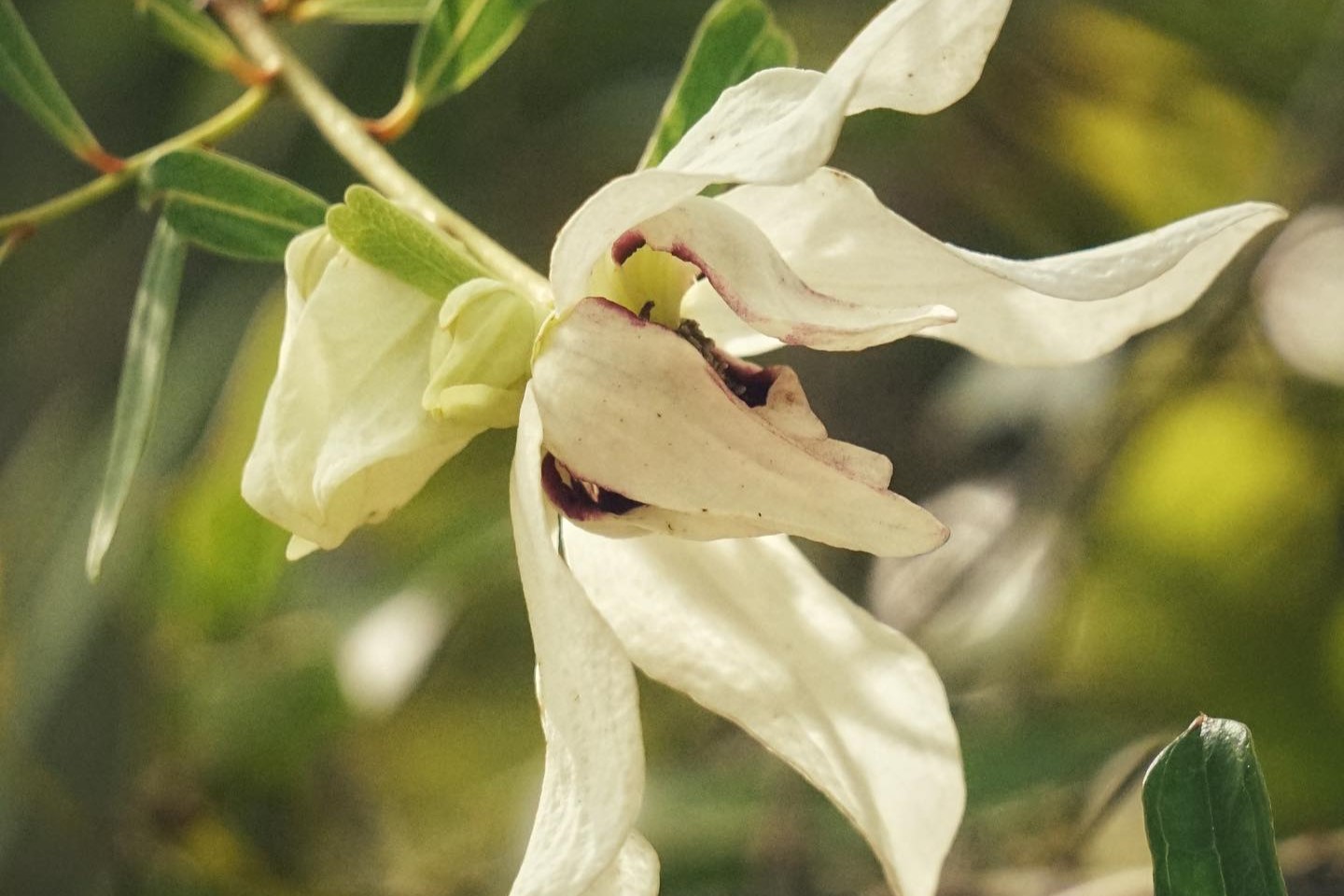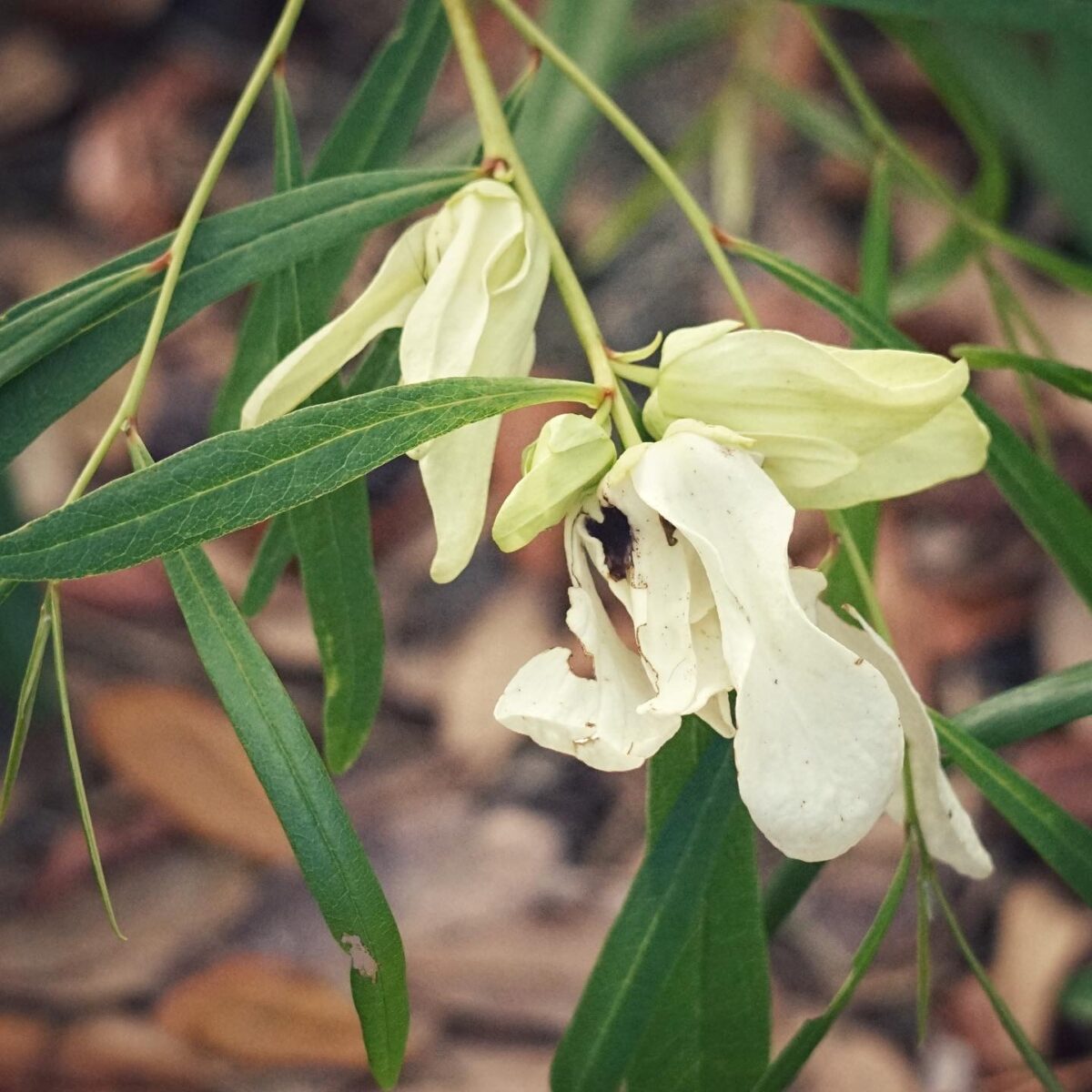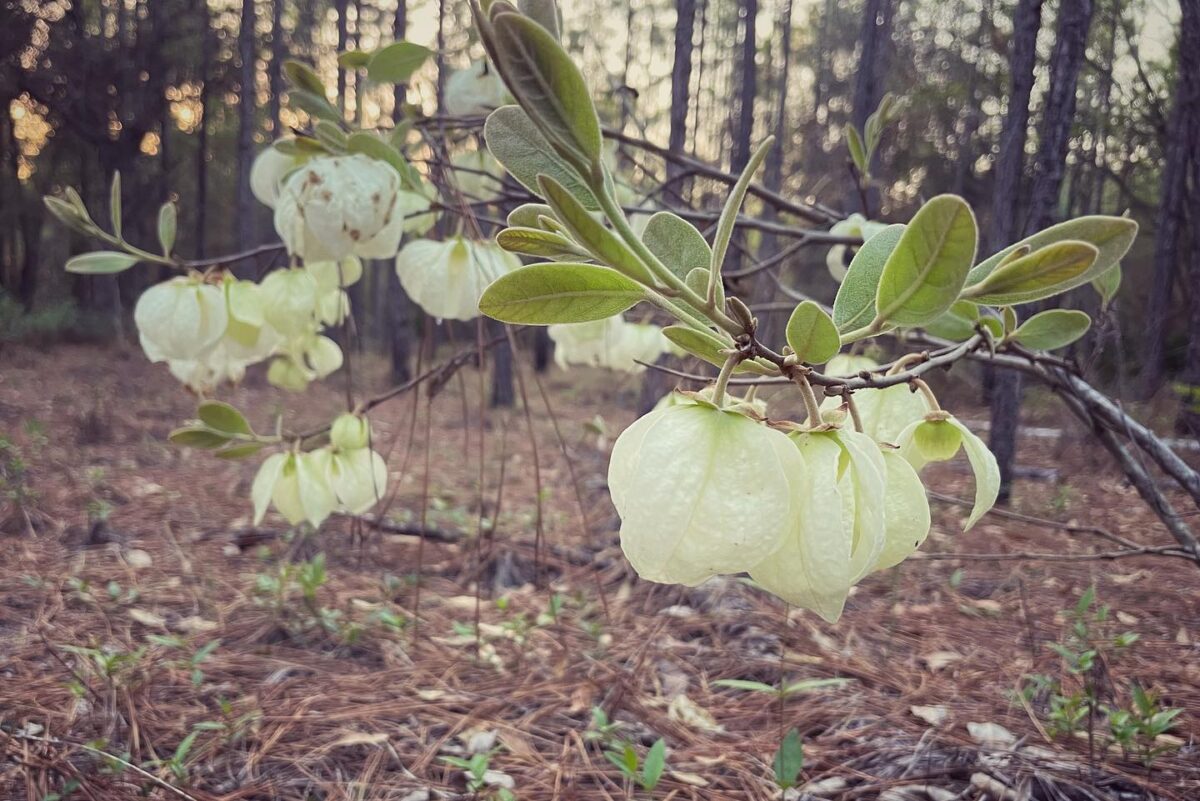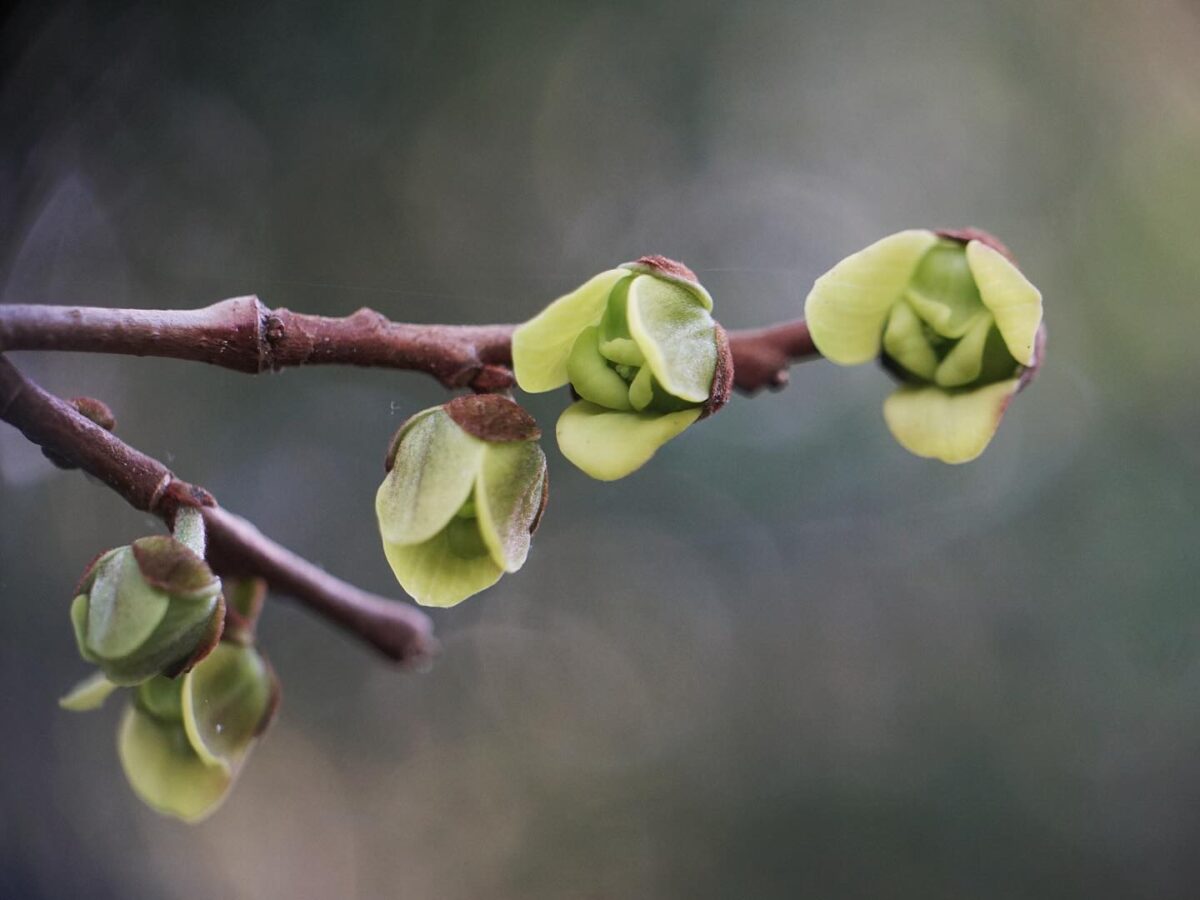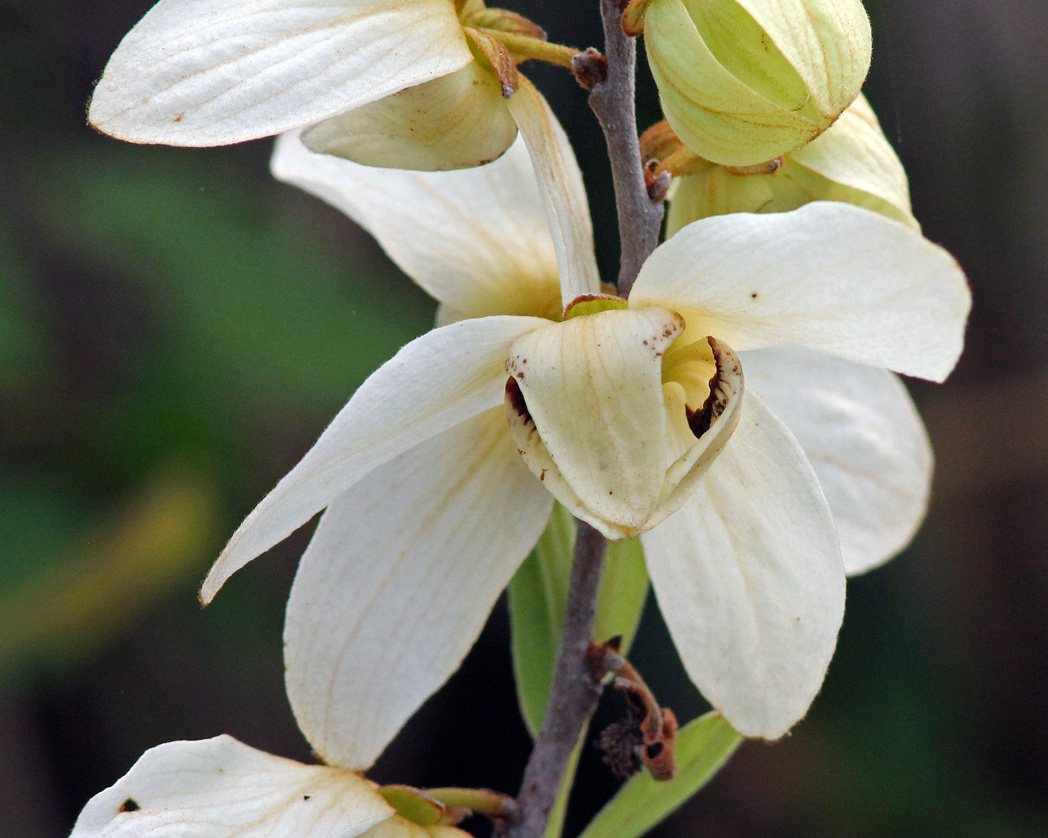Slimleaf pawpaw
Pictured above: Slimleaf pawpaw (Asimina angustifolia) by Emily Bell. Click on terms for botanical definitions. View post as a PDF.
Slimleaf pawpaw (Asimina angustifolia) is a deciduous flowering shrub found in flatwoods, scrub and sandhills from southeast Georgia into North Florida. It is a larval host for the Zebra swallowtail butterfly and Pawpaw sphinx moth. The fruits, which ripen in summer through fall, are a favorite of birds and small mammals. Its primary pollinators are flies and beetles.
Slimleaf pawpaw’s showy flowers are creamy white to yellow with six petals. The three outer petals are large, narrow to oblong and outward spreading. Inner petals are small, fleshy and generally upright or inward pointing. All petals may have a purplish base. Leaves are alternately arranged and linear. Fruits are up to 4 inches long and cylindrical. The plant has a long taproot.
While the fruits are edible for humans, it is hard to beat the wildlife to them! Additionally, they must be perfectly to almost overly ripe. According to experienced forager Green Dean, pawpaw fruit should be eaten with caution as some people have an allergic reaction to it. Check out his website for more information on edibility, as well as historical uses of the plant.
Asimina angustifolia is the currently accepted name for Slimleaf pawpaw, although the synonym Asimina longifolia is also still used.
Family: Annonaceae (Custard apple or soursop family)
Native range: North Central Florida
To see where natural populations of Netted pawpaw have been vouchered, visit florida.plantatlas.usf.edu.
Lifespan: Perennial
Soil: Well-drained sand
Exposure: Full sun to part shade
Growth habit: Up to 5 feet and spreading
Propagation: Seed
Florida regions of landscape suitability: North
Garden tips: : Slimleaf pawpaw is suitable for naturalistic landscapes and butterfly gardens. It does not transplant well. Although not commonly available from native plant nurseries, it may be grown by enthusiasts.
For information on other Asimina species, see these resources:

